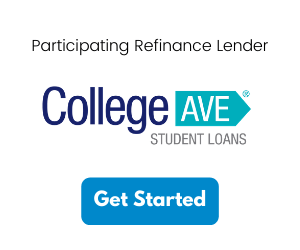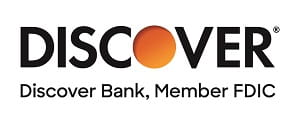It’s normal to wonder if you can move your student loans to a new lender, especially if it could mean better repayment terms or lower interest rates. This process, often called consolidation or refinancing, lets you combine multiple loans into one. It not only helps streamline your finances but also makes tracking and managing your payments much easier.
Knowing your options for managing student debt effectively is important. It helps you reduce financial stress and save money in the long run. Understanding your choices can help you to make decisions that align with your financial goals.
Types of Student Loans: Federal vs. Private
Federal Student Loans
Federal student loans come in several types, each designed to meet different needs. The most common are Direct Subsidized Loans and Direct Unsubsidized Loans. Direct Subsidized Loans are for undergraduate students with financial need. The government pays the interest on these loans while you’re in school at least half-time, during your grace period, and during deferment periods. This can save you a lot of money in interest charges over time.
Direct Unsubsidized Loans, on the other hand, are available to both undergraduate and graduate students. You don't need to show financial need to receive these loans. Unlike subsidized loans, interest on unsubsidized loans starts accruing as soon as the money is disbursed. While you can choose not to pay the interest while you’re in school, it will capitalize, meaning it gets added to your principal balance and you’ll have to pay interest on the higher amount once you being repayment.
Federal student loans offer several benefits. Loan forgiveness programs like Public Service Loan Forgiveness and Teacher Loan Forgiveness are available if you meet specific criteria. Federal loans have fixed interest rates, flexible repayment plans, and options for deferment or forbearance if you encounter financial difficulties. These advantages make federal student loans a safe and manageable option for financing your education.
Private Student Loans
Private student loans are different from federal loans in several ways. Unlike federal loans, private student loans are issued by banks, credit unions, and other lenders. They don't offer the same benefits as federal loans, such as loan forgiveness programs or income-driven repayment plans. On the plus side, private loans can help when scholarships, grants or federal loans don't cover the full cost of your education. Sometimes they can even offer lower interest rates, especially if you have a good credit score or a co-signer with strong credit.
Keep in mind though, private student loans come with some risks. They can have variable interest rates, so your payments could go up over time. Also, private lenders often require you to start making payments while you're still in school. If you face financial hardship, you most likely will not have the same options for deferment or forbearance that federal loans offer. It’s important to read all the terms and conditions carefully before taking out a private loan to ensure it aligns with your financial situation and future goals.
Transferring Student Loans: What You Need to Know
Can You Transfer Between Borrowers?
No, you generally can't transfer student loans from one person to another. This applies to both federal and private student loans. Each borrower is responsible for repaying their own loans. Federal student loans are designed to stay with the original borrower. The lender and the government have agreements with that specific person based on their financial need and academic status.
For private student loans, the rules are similar. Private lenders also issue loans based on individual credit history and ability to repay. Transferring a loan to another person would involve too many financial risks for lenders.
There are unique circumstances, though. If you take out a private student loan with a co-signer, the co-signer is equally responsible for the debt. This means if you, the primary borrower, can't make payments, the co-signer must step in. A co-signer making payments does not mean the loan has been transferred as you both remain responsible for the loan.
However, some private lenders do offer co-signer release programs. Under these programs, if the primary borrower makes a certain number of consecutive on-time payments, as well as meets other conditions, the co-signer can be removed from the loan. The co-signer hasn’t transferred the loan, they have only been released. The loan still belongs to you.
Transferring Between Lenders
Yes, you can transfer student loans between lenders through a process called refinancing. This applies to both federal and private student loans. Refinancing involves taking out a new loan from a different lender to pay off your existing loans. It allows you to potentially secure better interest rates or repayment terms.
For federal student loans, transferring them to a private lender means you lose access to federal benefits. These benefits include income-driven repayment plans and loan forgiveness programs. Once you refinance your federal loans with a private lender, they become private loans. You'll need to carefully consider if the potential savings are worth losing those federal protections.
When it comes to private student loans, the process is straightforward. You apply for a new loan with a different private lender. If approved, the new lender pays off your original loan. This can consolidate multiple loans into one, or simply give you a better rate or repayment plan.
Important things to consider when changing lenders include your credit score and the terms of the new loan. A higher credit score can help secure a lower interest rate. Always read the fine print to understand any fees or penalties associated with refinancing. Think about your financial goals and what's most manageable for your budget long-term.
Consolidation and Refinancing Options
Federal Loan Consolidation
Federal loan consolidation simplifies the process of managing multiple student loans by combining them into one single loan. Here’s how it works:
When you consolidate your federal student loans, the Department of Education pays off your existing loans and issues you a new Direct Consolidation Loan. This means you only have to make one monthly payment instead of multiple payments to different loan servicers. The interest rate on the consolidated loan is a fixed rate. It’s calculated by taking the weighted average of the interest rates of the loans you're consolidating, rounded up to the nearest one-eighth of a percent.
Pros of Consolidating Federal Loans:
- Simplified Payments: Only one monthly payment makes managing your loans easier.
- Fixed Interest Rate: Your new loan will have a fixed interest rate, which can be beneficial if you have variable-rate loans.
- Access to Repayment Plans: Federal Loan Consolidation will keep your loans eligible for income-driven repayment plans or forgiveness programs.
Cons of Consolidating Federal Loans:
- Potential Loss of Benefits: Some borrower benefits may be lost.
- Longer Repayment Term: Extending your repayment term means you might pay more in interest over the life of the loan.
- Interest Capitalization: Any unpaid interest on your original loans gets added to your principal balance when you consolidate, which increases the overall amount you owe.
- No Interest Rate Reductions: Consolidation does not lower your interest rate; it’s simply a weighted average of your original rates.
Refinancing Private Loans
Refinancing private student loans means taking out a new loan to pay off your existing loans. This process usually involves applying for a new loan with a different lender. If your application is approved, the new lender pays off your old loan, and you start making payments to the new lender.
One of the main benefits of refinancing is the potential to secure a lower interest rate. This can save you money in the long run. You may also be able to change the terms of your loan, such as extending the repayment period to reduce your monthly payments, making it easier to manage your finances.
However, there are risks involved with refinancing, especially if you choose to refinance federal loans into private loans. By doing so, you lose access to federal protections like income-driven repayment plans and loan forgiveness programs. Private loans don't offer the same benefits or flexibility, so it's important to weigh these risks before making a decision.
Tips for Managing Student Loans Effectively
Managing student loans doesn’t have to be overwhelming. Here are some practical tips and strategies to help you stay on top of your loan payments and make informed decisions about your financial future.
Strategies for Staying on Top of Loan Payments:
- Create a Budget: Start by tracking your income and expenses to understand where your money goes. Allocate a portion of your budget specifically for loan payments.
- Set Up Auto-Pay: Many lenders offer interest rate reductions if you set up automatic payments. It also ensures you never miss a payment.
- Make Extra Payments: Whenever possible, pay more than the minimum. Even small extra payments can reduce your overall interest and shorten the loan term.
- Prioritize Higher-Interest Loans: If you have multiple loans, focus on paying off the ones with the highest interest rates first to save money in the long run.
Resources for Budgeting and Planning Loan Repayment:
- Use Budgeting Tools: Apps like YNAB (You Need a Budget) can help you keep track of your finances and stay organized.
- Loan Calculators: Online loan calculators can help you understand how different payment amounts and schedules will affect your loan over time.
- Financial Counseling: Many universities and financial institutions offer free or low-cost financial counseling to help you plan your repayment strategy.
Fully understanding your loan terms before making any changes is important. This includes knowing your interest rates, repayment schedules, and any benefits or protections tied to your loans. Always read the fine print and reach out to your lender if you have any questions.
Carefully consider all your options before refinancing or consolidating your loans. While these choices can offer lower rates or simplified payments, they can also result in the loss of federal benefits. Be sure to weigh the pros and cons to make the best decision for your situation.
By implementing these strategies and utilizing available resources, you can effectively manage your student loans and achieve financial stability.











